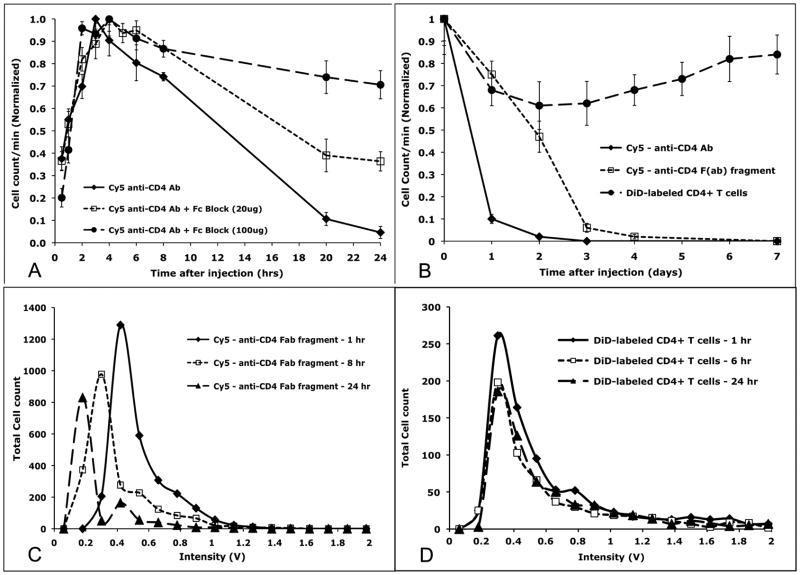Figure 1.
Kinetics of cell depletion detected by IVFC is influenced by the fluorescent probe used. A, B. Cy5 conjugated antibody against CD4 was injected intravenously into BALB/c mice, and fluorescent cells were counted using the IVFC to quantify the number of circulating fluorescent T cells as a function of time. A. The circulation time of the Cy5-CD4 labeled T cells was significantly enhanced by pre-treatment of the mice with Fc block (a mixture of antibodies directed against mouse CD16 and CD32) in a dose-dependent fashion. B. Likewise, enzymatic removal of the Fc portion of the anti-CD4 antibody enhanced the longevity of the fluorescent T cells in the circulation by tens of hours when compared to the results obtained using whole antibody (dashed square vs diamond solid lines). However, syngeneic T cells labeled with the lipophilic membrane dye DiD persisted in the circulation for days (dashed circle line). C. Depletion of T cell numbers over time is due to loss of fluorescent Fab fragment binding rather than removal of the cells from the circulation as is demonstrated by the reduction in fluorescent signal intensity over time. D. Cells labeled with DiD did not lose signal intensity. For A: n = 3 mice; B: n = 5 mice; C,D: Plots from two representative mice injected with either Fab fragment directed against CD4 or DiD labeled donor T cells. Each data point was measured three times. CD4 antibody and Fab fragment injections were done at 1mg/kg.

